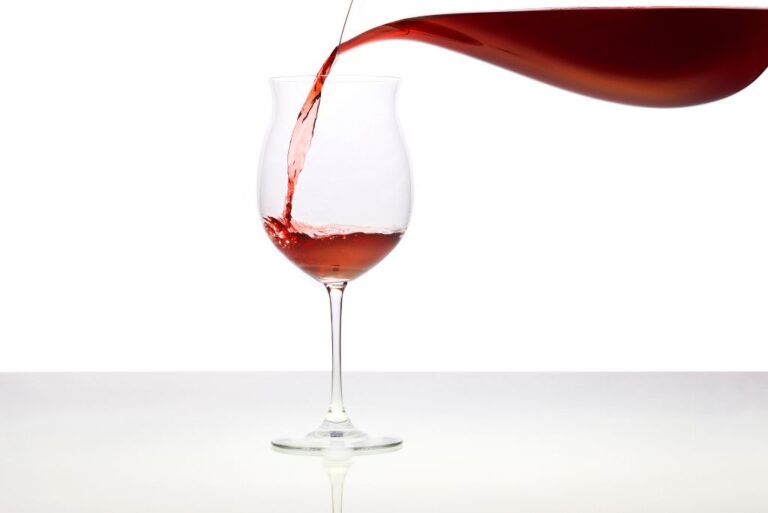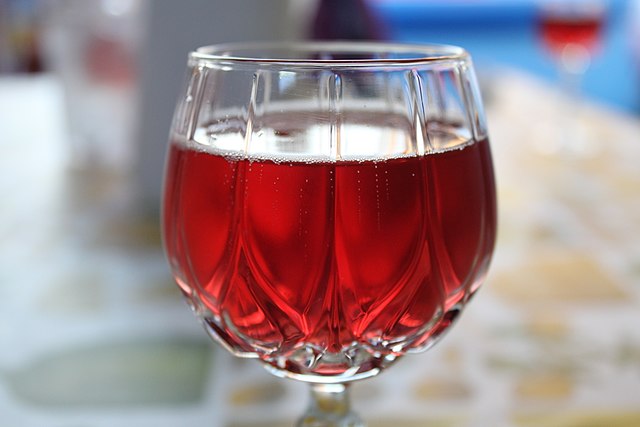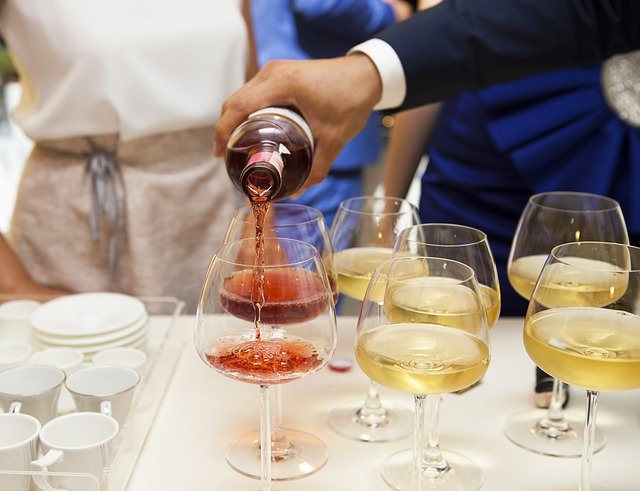Want to know Tempranillo Wine The Best Temperature To Serve And Store Wine In brief?
Well, there are several factors to consider when storing wine, like the type of wine you’re storing and the storage environment. For example, some wines do better at room temperature while others do better in cold storage.
Since Tempranillo wine comes from Spain and Portugal, it’s important to know whether this temperature fluctuation will negatively affect the taste of your wine before you buy it and how to store it once you get it home to enjoy later on.
Here’s what you need to know about serving and storing Tempranillo wine at the right temperature!
Table of Contents
- What is Tempranillo?
- What Is The Best Temperatures for Tempranillo Wine?
- How To Get the Right Temperature for Tempranillo Wine?
- Where Should You Store Tempranillo Wine Bottles?
- How Long Does Tempranillo Wine Last?
- Additional Tips on Tempranillo Wine
- What Goes Well with Tempranillo Wine?
- How To Drink Tempranillo Wine?
- Is Tempranillo a Lite Wine?
- Is Tempranillo Spicy?
- Can Tempranillo be served chilled?
- Conclusion
What is Tempranillo?
Tempranillo is a white or red wine grape. Originally from Spain, it has spread and evolved throughout other parts of Europe as well. Although there are many types of Tempranillo wines, it is most commonly blended with Cabernet Sauvignon and Garnacha Tintorera to make Sangiovese.
Sangiovese is an Italian wine that is high in acidity and low in tannins. When made by itself, however, Tempranillo tends to be softer and lower in acidity while still having flavors of black cherry and tobacco leaf.
In Rioja production (in Northern Spain), Tempranillo accounts for 90% of all red wines produced.
Also Read this: Sweet Red Wine: Proper Temperature For Storing
What Is The Best Temperatures for Tempranillo Wine?
Tempranillo, like most red wines, tastes best when it is served at a temperature that is neither too hot nor too cold. Most experts recommend serving Tempranillo Wine between 60 and 65 degrees Fahrenheit.
If you want to be precise about it, look for a red wine thermometer at your local home-goods store or restaurant supply store.
If you can’t find one, use an infra-red thermometer to determine if your wine is close to room temperature by holding it about 1 inch from the glass and watching what number pops up on its display screen.
For example, if your room is 75 degrees F and your wine registers 72 degrees F with your infra-red thermometer, you’re good to go!
How To Get the Right Temperature for Tempranillo Wine?
Red wine should be served at 55 degrees and white wine at 45 degrees. But not all red wines are created equal, and thus they’re not all going to have your favorite temperature. So, find a red wine that you love, bring it home and then stick it in your fridge for 30 minutes (to match white-wine temperatures).
Then, pull it out and see how you like it. If you prefer a higher temperature, then simply keep sticking it back in for 15-minute intervals until you’ve found your perfect temp!
(It may seem obvious but double-check—the temperatures are only to match with similar whites or reds.) Happy sipping!
Where Should You Store Tempranillo Wine Bottles?
Another point to consider is where you store your wine. If you have space, invest in a wine cellar to keep your bottles in ideal conditions for aging. This will also allow you to put them away so that you don’t have to worry about the temperature at all.
But if storing them inside isn’t an option, remember that they should be kept in a cool (but not freezing), dark place. Avoid damp places or basements—these can cause condensation, which can damage labels and even tarnish corks.
A wine refrigerator is another good option; these aren’t much more expensive than most other kitchen appliances and are worth it for both convenience and quality.
How Long Does Tempranillo Wine Last?
If you’re like most people, there are a lot of bottles of wine in your cellar. When you want to drink some, it can be frustrating to find out if it’s still good. How do you know how long does wine last? Here is some information on storage times for different types of wines.
A glass of wine with dinner can pair wonderfully with just about any food; unfortunately, storing it is no simple task. Because wine is perishable and affected by light and temperature, proper storage is essential to maintaining its quality over time.
Additional Tips on Tempranillo Wine
Different wine varieties are best enjoyed at different temperatures. Of course, you can always drink your wine chilled, but that doesn’t necessarily mean it’s being fully appreciated.
Here are some recommendations on how to best store and serve popular wine varieties: Pinot Noir should be served cool (between 55 and 60 degrees Fahrenheit) with a few hours in an ice bucket prior to consumption.
Riesling is best served around 59 degrees while Chardonnay should be between 50 and 58 degrees Fahrenheit; anything colder or warmer than that and you may not get all of its flavor notes.
What Goes Well with Tempranillo Wine?
Tempranillo is an immensely versatile wine, and can be paired with a wide variety of foods. Of course, certain foods pair better than others; tempranillo wines pair especially well with beef and red meats in general.
This wine is also great for those who enjoy creamy sauces or dishes like pasta or potato-based side dishes. Tempranillo pairs well with both spicy and milder flavor profiles so feel free to experiment!
But remember that you’ll need to use your own palate as a guide to decide what flavors work best together and in what quantities.
How To Drink Tempranillo Wine?
Although it may be tempting to try and drink wine as cold as possible, a slightly lower temperature is ideal.
Serving your Tempranillo at around 62 degrees Fahrenheit will allow its flavor profiles to shine through best, which pairs perfectly with food or on its own. After you’ve let your wine breathe for at least half an hour (ideally up to an hour), take your first sip and notice how much smoother it tastes than when you first poured it.
Once opened, you should aim to drink your Tempranillo within two days of opening. If you don’t plan on finishing that bottle right away, do not recork it—simply seal it in a plastic bag or put a cork in top if there’s still some air inside.
Is Tempranillo a Lite Wine?
Yes, tempranillo is a light wine. A half bottle of red wine can have around 125 calories. While that isn’t necessarily light, it is less than many other varieties of red wines like cabernet sauvignon or merlot which can be much higher in calories.
One great thing about tempranillo is that it doesn’t have as much alcohol content as many other varieties which means you don’t need to worry about it being too heavy to drink!
Is Tempranillo Spicy?
Because Tempranillo is a higher-tannin wine, it is frequently considered to be a spicy red wine. You may notice flavors such as cloves, cinnamon, or anise when you taste one.
However, not all wines made from Tempranillo grapes have that spicy bite—the level of tannins in any given bottle of Tempranillo will vary from winery to winery and year to year. Check with your wine store before purchasing a bottle of Tempranillo if you want to try it.
If they don’t have it on hand, ask them what other bottles they would recommend that are similar in style and body so you can try one that fits your tastes best!
Can Tempranillo be served chilled?
This is one of those questions that depends on your intended use for it. Tempranillo, when young and full of fruit and freshness, can be served at a cooler temperature than one might expect from red wine.
On that same note, though, tempranillo also ages quite well; if you have an older bottle sitting around, serving it chilled will mask some of its more subtle flavors.
As a rule of thumb, it’s usually best to let Tempranillos breathe for about 45 minutes before serving them (if you’re planning on drinking them). If not—it won’t hurt anything to pour yourself a glass right away!
Conclusion
Experts often recommend serving red wine between 55 and 65 degrees Fahrenheit. However, when it comes to tempranillo, temperatures a bit higher are ideal.
Red wines aged in barrels should be stored at a warmer temperature—somewhere between 62 and 70 degrees Fahrenheit—to ensure proper aging.
If your red wine seems to have lost some of its flavor and aroma, or if you notice sediment collecting at the bottom of your bottle, consider moving it to a cooler spot before consumption.
Keeping white wines cooler is usually best, but certain varieties may taste better when slightly warmed; refer to your specific bottle’s label for recommended serving temperatures. For more information on selecting and storing wines, check out our informative guide!







